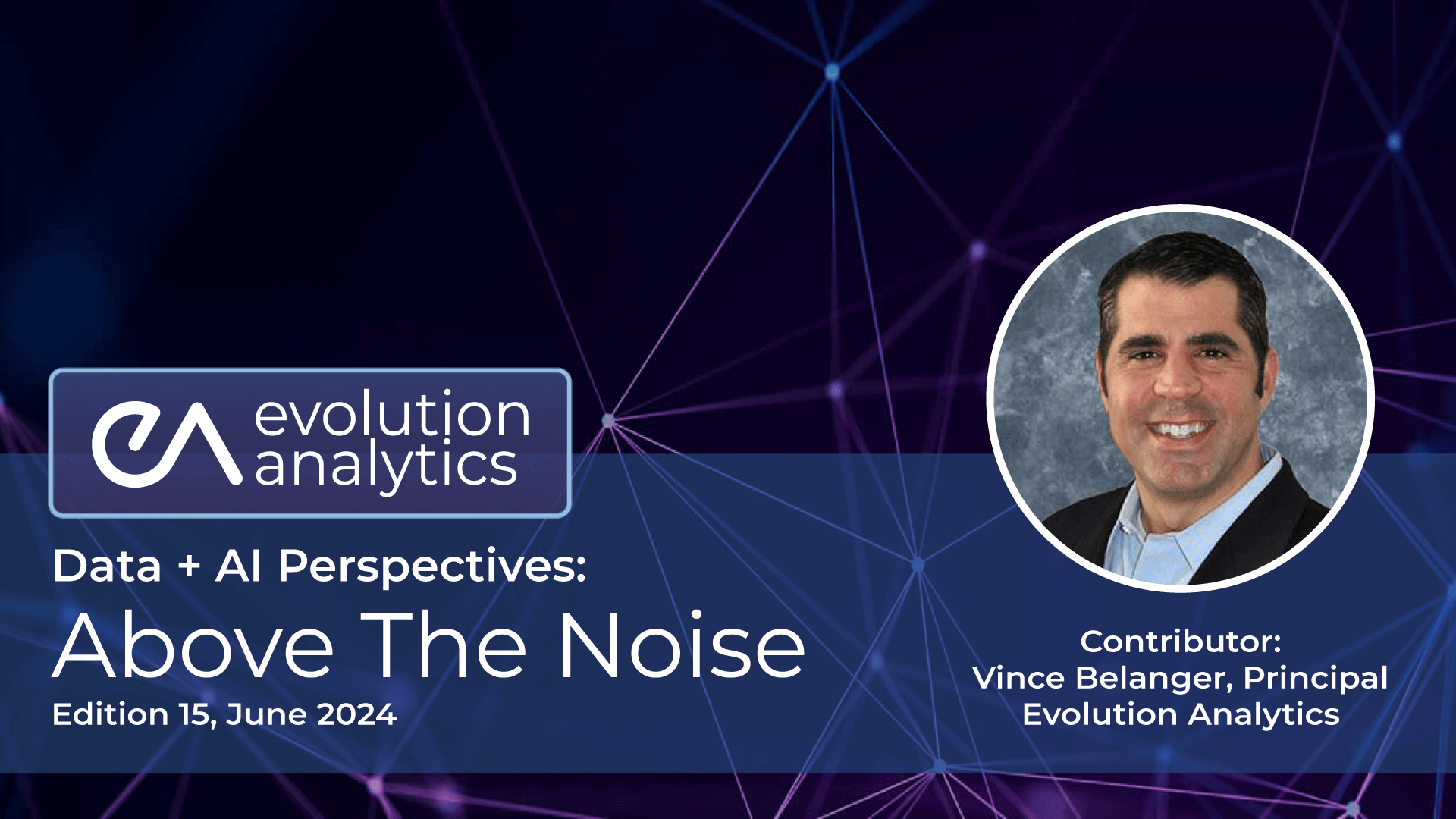The Elusive ROI of AI: Navigating the Complexities

Vince Belanger
Principal
Evolution Analytics, LLC.
Posted: June 27, 2024
As you integrate Artificial Intelligence (AI) into your business operations, you might find yourself reflecting on the early days of Business Intelligence (BI). Like BI, AI offers transformative potential yet presents a familiar challenge: how do you calculate the return on investment (ROI) for AI implementations? This journey of measuring AI’s impact is not just about numbers; it’s about understanding the deeper value AI brings to your organization.
Deciphering AI ROI
When we talk about AI ROI, we’re discussing the balance of costs versus gains. These gains manifest as increased revenues, cost reductions, or efficiency improvements. For instance, if your company invests $1 million in an AI system to optimize logistics, and this system saves you $300,000 annually by streamlining inventory and routes, you’d initially think the return seems straightforward. But the true value of AI often transcends these immediate financial calculations.
Challenges in Pinning Down AI’s Financial Impact
One of the most significant challenges in quantifying AI’s ROI is the indirect nature of many of its benefits:
- Customer Experience Enhancements: AI can significantly improve customer service through personalized recommendations and faster response times. While these enhancements lead to higher customer satisfaction and retention rates, quantifying the direct impact on revenue can be elusive.
- Operational Efficiencies: AI’s ability to streamline operations, such as automating administrative tasks or optimizing manufacturing processes, saves time and money. However, the ripple effects, such as employee reallocation to higher-value tasks, present quantification challenges.
- Risk Mitigation: AI enhances decision-making through predictive analytics, helping companies avoid costly errors or anticipate market changes. The savings from these avoided costs are real but difficult to forecast and quantify accurately.
Illustrative Examples from Industry
To better understand AI’s ROI, let’s look at some specific instances where AI has made a difference:
- Healthcare: AI tools that predict patient hospitalizations can save millions in unnecessary hospital stays. For instance, a healthcare provider implementing AI to analyze patient records and predict at-risk patients could reduce readmissions, a benefit that directly correlates with both cost savings and improved patient outcomes.
- Retail: AI-driven demand forecasting can optimize stock levels, reducing both overstock and stockouts. For a large retailer, this might translate into millions saved in inventory costs. Moreover, AI-enhanced customer insights can drive personalized marketing, indirectly boosting sales.
- Banking and Finance: AI algorithms that detect fraudulent transactions in real-time can save institutions substantial amounts in potential losses. Additionally, AI-driven robo-advisors provide scalable, personalized investment advice, opening up new revenue streams from clients who might not otherwise engage with traditional advisors.
Drawing Lessons from the BI Journey
Reflecting on the path BI took helps frame our expectations and strategies for AI. Initially, BI tools were celebrated for their potential more than their proven value, similar to today’s AI landscape. Over time, as businesses learned to integrate BI deeper into their workflows and decision-making processes, its value became more apparent and easier to demonstrate.
A Forward-Looking Perspective on AI Investments
Understanding AI’s ROI requires a shift from traditional, narrow financial metrics to a broader, more strategic view. AI should be seen as a critical component of digital transformation strategies that drive long-term sustainability and competitive differentiation.
Conclusion
As we continue to harness AI technologies and weave them into the very fabric of our business processes, capturing the exact ROI of AI will likely remain challenging. I encourage you to adopt a broad perspective, valuing strategic advantages and indirect benefits alongside direct financial gains. By learning from our past experiences with BI, you can navigate the complexities of AI investments more effectively, ensuring that AI becomes a cornerstone of your business strategy, not just a technological experiment.







